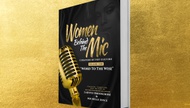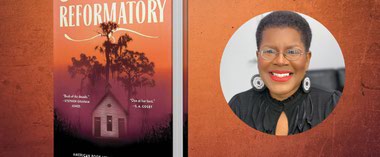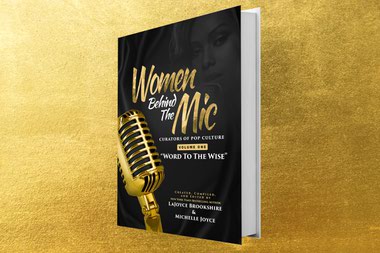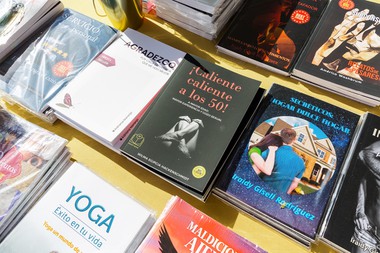Before it delivers the inevitable jolt of redemption, The Night of The Gun is a maddening book, dangerous in large doses to anyone who has ever romanticized the outlaw appeal of the addict, frequently absurd and offensive to those drunks and dope fiends who have somehow managed to ask for help and get on with their lives.
The author, David Carr, is a onetime crackhead and former boozehound who cheated on and beat women, betrayed friends, lied to just about everyone he knew and generally screwed up his privileged and promising life. He is also the loving father of twins, apparently happily married, the well-respected media columnist for the New York Times. The account of his descent from a “suburban idyll where any mayhem was hidden in the rear rooms of large split-level homes” to minor crime, sleazy violence, hopelessness and his subsequent rise to something like wisdom and shaky health is a fairly oft-told tale, and Carr knows it. “The meme of abasement followed by salvation is a durable device in literature,” he writes, in one of his initially interesting and then profoundly irritating asides on the unreliability of memory, the nature of truth and the novelty of his approach to his own life. “But does it abide the complexity of how things really happened?”
More
- Beyond the Weekly
- The Night of the Gun
- David Carr
- Me and My Girls (New York Times, 7/20/08)
The question is rhetorical, and for Carr, the answer is no. So Carr, rather than trusting his own recollections, also interviews and records others who witnessed and in many cases participated in his journey from horror show to happy ending. Ex-girlfriends, former drug dealers, old partners in low-level crime and family members all get to weigh in, and their testimony can be summed up thusly: “It didn’t happen quite the way you remember it, David, and in most but not all cases you were more screwed up and less noble than you remember. Still, you’re a pretty cool guy.”
Never mind the questions of whether his old running buddies are any more reliable at accurate recollection than Carr, or whether their more damning memories about him made it into print. Many of the speakers have some interesting things to say. What grates is Carr’s admiration of his own reportorial technique. What grates even more is Carr’s incessant glamorizing of his life, even and especially when he was using. It was a world in which he “got in jams” and “worked for some rough cats,” a world where men didn’t save money, they “buried dough.” Carr and his friends might be fuck-ups in that world, but they were tough fuck-ups—“we could take over a room or turn it against us with a flick of the wrist.” In Carr’s drug-addled universe, all women are “gorgeous,” one is “short and cute as bugs’ ears, a tough little broad from northern Minnesota”; another is “an epic dancer,” and yet another has “a massive, throbbing brain.” Even as he tells you how bad it all was, he makes sure to mention how loyal he and his friends were, how invested in cool, how talented. At times, he makes drug addiction sound almost heroic. After all the jams and rough cats, and after passage after passage of “there are practical impediments to communicating the baseline reality of addiction” and “truth is singular and lies are plural,” you wish he would shut off the video camera, cease the philosophizing and get on with his story. To wit: What made him become a crackhead? Why did he beat up his girlfriend? How did he see the light?
It’s to Carr’s credit that he tries so hard to answer these questions. It is to the reader’s great frustration that he so often fails and at other times seems so unbelievably clueless to the hard, simple answers right in front of him. Nowhere is this failing more apparent than toward the end of Carr’s tale, when, 14 years after he finally kicked his crack cocaine habit and, by necessity, all other mood-altering drugs, he starts drinking again.
“The heedlessness of that act is beyond comprehension,” he writes, “in part because I was sitting atop all the promises that sobriety brings: a wife and family I adored, a job I was proud of [by then he was working at the New York Times] and enough income to live comfortably.”
Still, he drinks for three more years, through arrests and humiliation and more lies and one horrible night when he almost kills himself and his daughters, who are in the car with him when he is drunk. Drunks who have put together some years of relatively happy sobriety will tell you that anyone who thinks sobriety promises familial bliss, or job security, or a nice paycheck, is deluded and a good bet to drink, no matter what the external circumstances of his life (what are referred to in the recovery community as mere “cash and prizes”). Those happy sober drunks will also tell you that Carr started drinking again because he’s a drunk, nothing more literary than that, nothing that can be explained or illuminated by any blarney about how drinking represented “some venal long-brewing urge to take a sledgehammer to things I adore” or how “my decision might have been as basic as a longing for the dark aspects of life …” Those are a couple of the dumber theories Carr trots out as he tries to understand how he could have screwed up so mightily, with so much to lose.
Carr finally abandons his search for explanations, his relentless theorizing about memory and his longing for the dark side and all that. He does what a lot of other crackheads and boozehounds before him have done. He gives up. He asks for help. He starts attending meetings of other dope fiends and drunks on a regular basis. It’s those actions of humility that make Carr’s recovery—still ongoing, still fragile—just like every other drunk’s recovery. It’s those actions that ultimately transform his story into the meme of abasement followed by salvation of which he is so skeptical. It’s his meme now. It’s what saves him. It’s what almost saves his book.
The bottom line: **








Previous Discussion: